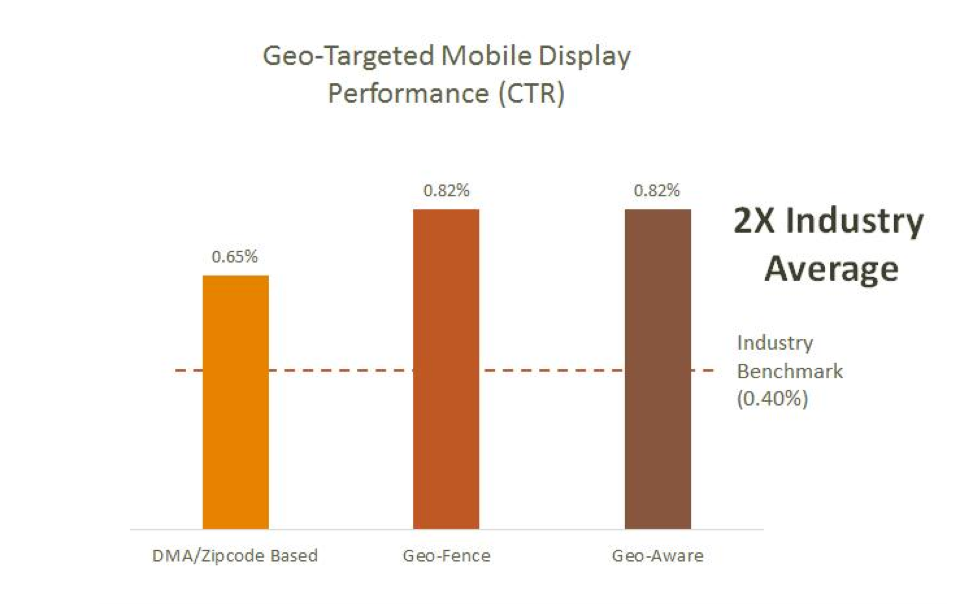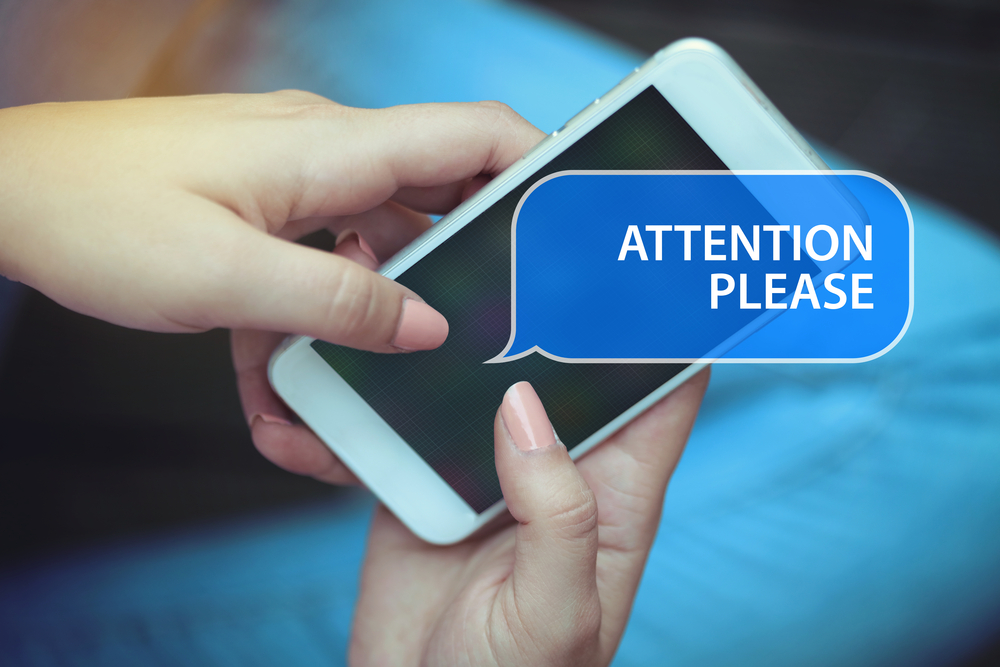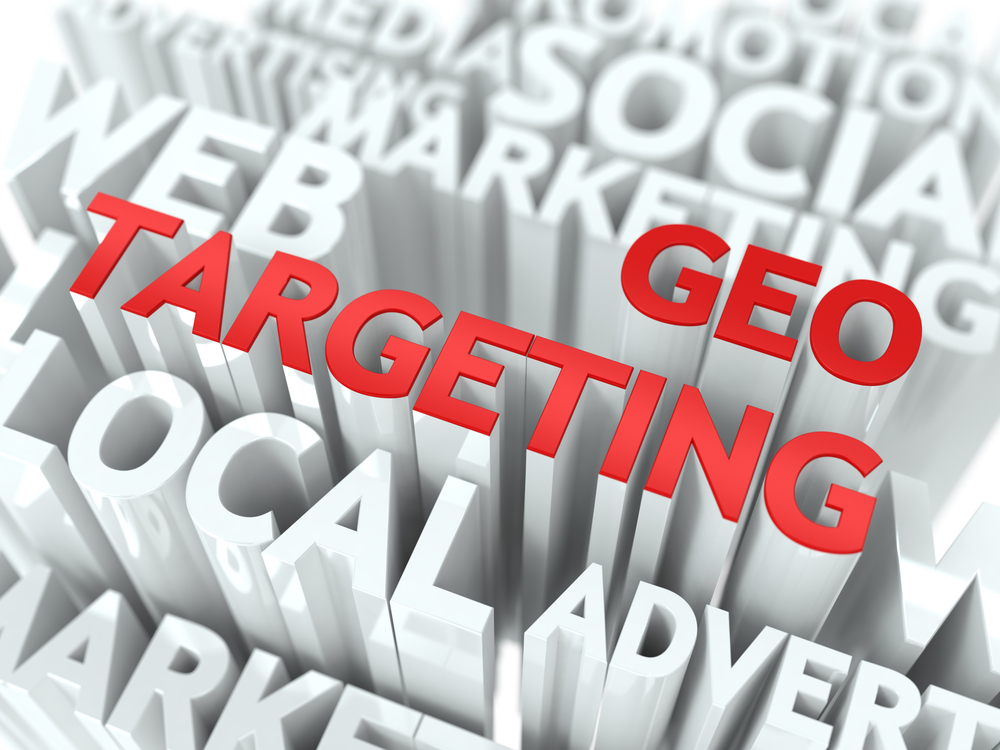
Have you gotten into your car after work when an instant traffic report for your commute home suddenly pops up on your phone? If this is not a phenomenon you’ve experienced yet, look for useful insights like these and many others to start showing up on your mobile device out of the blue.
It’s called geofencing, and studies show that this locally optimized approach to reaching customers boasts double the click through rate of normal mobile advertising. If you are a small business owner, you need to get on board with this marketing marvel right away. It’s an easy and affordable solution to engage your customers and grow your bottom line.

(Screenshot credit: Search Engine Land)
Why You Should Adopt a Geofencing Marketing Approach
First of all, with any new and emerging technology, you need to see the evidence to support the hype. Data drives decisions, and in this case, the numbers speak volumes.
- 60% of consumers look for local information on their mobile devices.
- 40% of consumers look for information while on the go.
- 70% of consumers are willing to share their location with you for something in return.
- Secondary Action Rates–meaning people visit a store or take some other additional action after seeing an ad–are more than 2x as likely to occur with location-based marketing.
- Home and trade services rank among the industries that receive the highest secondary action rates.
How Can This Location Data Help Me?
How can you use this exciting and versatile technology in your business? There are many ways you can use geofencing to help increase customer interactions, employee productivity, accountability, and profits, as well as keep your property and assets safe.
The first step is to develop a mobile app that supports this technology. From there, the possibilities are endless. Just look at what ground-breaking steps are being made within businesses who have begun to use geofencing.
North Face Uses Geofencing to Boost Sales with Creative Alerts

North Face is one of the big guns when it comes to outdoor apparel. One of the reasons the brand is so successful is because it’s not afraid to experiment with new technology.
The company recently experimented with geofencing as a means to lure customers to their stores by using push notifications about the weather. Their weather-based geofenced alerts have been quite successful. The company boasts a 79% increase in store visits from customers who receive the alerts, and 65% of those customers make purchases.
There’s a lot you can learn from the marketing team over at the North Face—even if your business is on a much smaller scale. First of all, studies suggest that when a user isn’t surfing the web on his or her phone, he or she is likely to spend 86% of smartphone time using apps.
Pay attention to how the big guys are playing the mobile game—there’s a lot to learn, and in a digital world, your small business can compete. More importantly, don’t ignore a powerful resource because you don’t understand it—learn what’s new, and learn how to apply it to your business.
BMW Uses Geofencing to Offer Quality Customer Service

BMW has also employed geofencing into their mobile business plan—in a rather different manner than most. Where most companies are using geofencing as a tool for garnering consumer attention with flashy promotions, BMW’s use is a little more pragmatic.
BMW incorporates geofencing in their BMW Trackstar and BMW Trackstar Advance services. After the activation of this service, your car’s position is pinpointed every 20 seconds. If the car is moved without the use of its keys, and the car moves out of a designated geofence, it will notify BMW who will then reach out to the car’s owner.
Recommended for You Webcast, September 7th: 3 Ways to Speed Up Your Marketing Review and Approval Process
Again, as a small business owner, you can learn a lot from BMW with regard to the customer service potentials of a geofence. You may not have the theft of an expensive car to worry about in your business, but you do have customers who need product protection, communication, and reliability. With about 90% of customers expecting some sort of self-service customer support, investing in the right solution will place your brand in your customers’ good graces.
Walgreens Uses Geofencing as a Means of Customer Retention

Attracting customers is one thing but retaining them is another story entirely. Studies suggest that 83% of millennials connect with brands that appeal to their digital needs, and of that 83%, 62% become brand loyal customers.
Walgreens is using mobile marketing as a way to build trust and eventually promote brand loyalty in its customers through geofencing. Whenever a customer pulls into a fenced location a notification allows the user to open the app without having to look for it. After that, customers can scroll through their account details or view promotional offers.
Clearly the data shows that loyalty programs are a must for today’s consumers. Your business can mirror Walgreen’s direction when you add a geofence to your mobile app.
This specific approach to mobile marketing gives the user an experience of exactly “what they want when they want it” which is a hard feat to achieve in marketing. Service without interruption promotes customer loyalty.
Uber Uses Geofencing for Proactivity

Following the lead of tech-giants around the world, Uber has also delved into using geofences. Uber uses geofences at Los Angeles International airport so that when users arrive at the airport they are notified about the number of cars available to meet their needs. This allows geofences to serve as a means of providing proactive customer services.
If you are in the travel niche, you can learn a lot from Uber’s proactive approach to catering to potential consumers. But, even if you are not in the travel businesses, thinking about ways to let your customers know you have what they need when they need it most is a great way to use the geofencing capabilities of your business’ mobile app.
It’s important to note that 82% of businesses see quality information as the most important component of a customer’s experience. That means that your competitors are looking for ways to provide clients with the information they need. You need to stay competitive, and a lesson from Uber’s proactive geofences can certainly put you ahead of your competitors.
Honeywell’s Geofencing Approach to Going Green

Honeywell’s Lyric is a smart thermostat that uses geofencing to detect the presence of people in the room. It turns the heat on and off depending upon the presence of people in an area so that power can be saved.
People want to make the world a better place. There’s no better way to bring your brand into the limelight than aligning it with a noble cause that does just that—especially since 95% of students say they are less likely to ignore ads or promotions that show a brand’s relationship with a good cause.
If you can set up a geofence to bolster your cause, your business is certain to reap the marketing benefits—and so will your cause.
American Eagle’s Geofencing Marketing Endeavors

American Eagle set its sights on foot traffic to boost sales at its outlet stores. The clothing giant sent customers who entered geofenced outlet mall parking lot notifications and promotions. The incentives led customers into the door of American Eagle vs. its competitors. The result was a threefold increase in purchases.
As a business owner, you can learn from American Eagle’s success in sending push notifications. If you own a brick in mortar store, an incentive when people are in the vicinity is certain to remind them of something they need or want–let them know you have it when they are close. If American Eagle’s efforts show you anything, it is that paired with the right location, technology can minimize marketing legwork while maximizing customers’ responses—thus making marketing campaigns that much more effective.
Simply put, use the data to track your users’ behaviors. Then, build the right type of geofenced marketing campaign, and let your app do the work for you. The data shows it works.
Taco Bell Reaches the Right Crowd with Its Geofence

Taco Bell’s app is a crucial tool in their geofencing marketing plan. Its mobile ordering feature entices users to download it. With the app in place, hungry customers can order from their phones and then simply go pick up their food—no wait.
After consumers have downloaded the app, the restaurant utilizes geofencing as a way of targeting people under 30 years old with push notifications whenever they are in the vicinity of a Taco Bell. A quick reminder that they can order food from their phone and pick it up two miles down the road was a great way to appeal to the “Want it Now” generation.
Taco Bell recognized its consumer base, used the right tools to communicate with it, and showed an increase in their annual sales of 6%.
Marketing to the right crowd is business 101. With the right tools, your small business can send notifications to your customers without breaking the bank. All you need is a mobile app with geofencing capabilities.
History Channel

In order to keep up with the times, the History Channel has also begun to utilize geofencing in its Foursquare Campaign. This ground breaking idea gives history buffs something they yearn for—historical facts. In order to connect with its viewers, the History Channel setup geofences, so when any user checks into a particular historical location on Foursquare – say the White House of the Eiffel Tower – he or she gets historical facts about the place. The campaign generated a surprising 400 million check-ins.
Again the brainiacs at the History Channel can teach you a lot more than history. As a business owner, you can copy their thinking and use geofences to provide strong competition to similar nearby businesses and attract their consumer base. You can setup your fences so that users going towards your competitors are notified about your businesses promotions so that you can lure customers away from the competition.
Conclusions
It is safe to say that geofencing is powerful and affordable way to reach consumers. As an SMB, your growing business can easily learn to keep up with the big brand competition. Simply paying attention to how their marketing gurus are adopting geofencing into their mobile marketing plans can give you great insights to what your business is capable of achieving.
Any affordable option is worth exploring, and when you build an app equipped with geofencing capabilities, you are setting yourself up to stay current and competitive.
Let's block ads! (Why?)
Geofencing As A Marketing Strategy – Learn From 8 Businesses Who Are Profiting From Geofencing